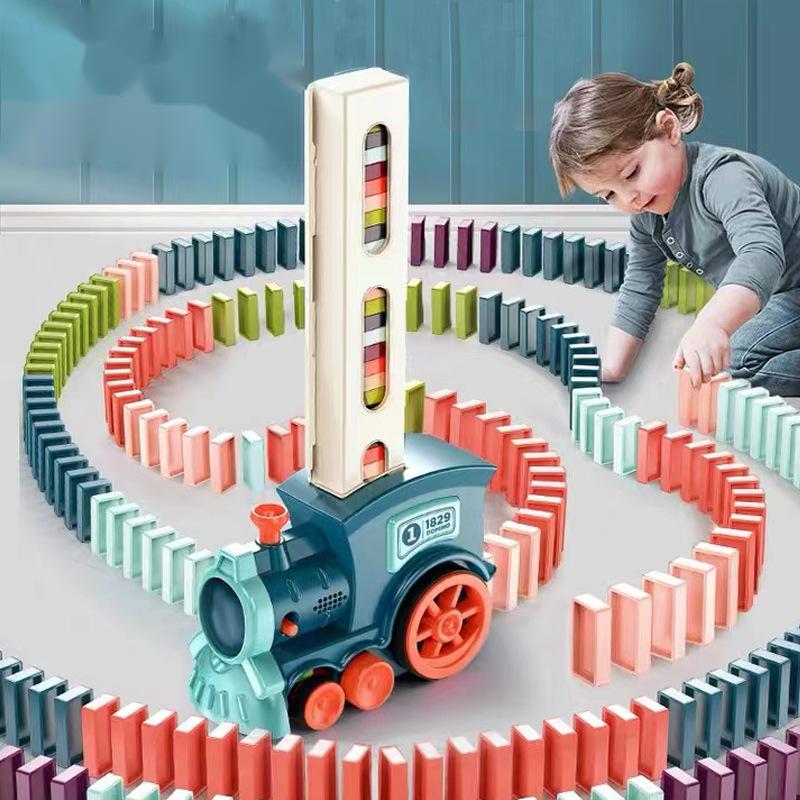🔥 Spring Festival holiday sales promotion up to 10% Discount
In spite of those shiny and glittering newly-released toys which claim to stimulate your kids’ potential before going to the kindergarten, a antique-like puzzle has so much STEM-boosting potential that you decide to buy it immediately. “It’s equally instructional to bang knob-fashioned puzzle pieces together like cymbals, make up a story in which the puzzle piece mama and infant giraffe wander off, or stack the puzzle portions right into a tower,” says an educational expert Julia Luckenbill, who's the little one-infant software coordinator at the center for child and family research at UC Davis. “that is very important because adults would like to look for the only one right manner of using tools, but kids are more dynamic in thinking.” Therefore, we might conclude that puzzles could stimulate more potentials out of Children than adults because the former would like to figure out more solutions to solve puzzles. Many preschool educators conclude that well-designed puzzles for infants and underage children could develop their talents and segue perfectly into extra complicated puzzles. When they grow older, some video games can help build Key STEM ideas, including exploring, logical thinking, questioning, logical reasoning, spatial reasoning, counting and solving problem. To be honest, potential-stimulation puzzles could become productive replacements to electronic entertainment products and social media.
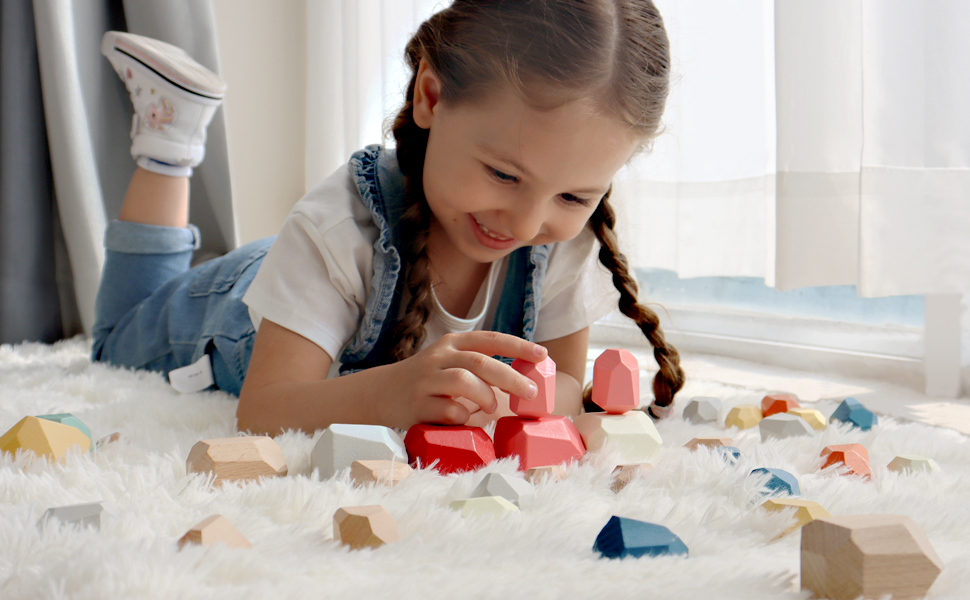
Wooden Sorting and Stacking Rocks
In order to take good advantage of toddler puzzles, parents should be give them the most independence in choosing and playing them. In other words, children should be give more freedom in playing puzzles than when they are in other toys for games. They should be allowed to choose whichever methods to fit or solve those problems. The main reason for giving children so much freedom in puzzles comes from the hypothesis that open-ended toys allow children to do more thinking, such as comparing and trying different solutions, observing their own or other children’s attempts and concluding solutions. Because these toys are open in their ends, nobody know the results. Any outcomes or conclusions from them are possible and reasonable. On the other hand, closed-ended toys cannot allow children to get many outcomes different from those preset ones. Children don’t need to figure out other solutions and just require to find out those preset ones. When their solutions are different from the expected ones, adults could frustrate them by telling them they are wrong. Children couldn’t extend their learning in these close-ended toys. Actually, children love exploring this world through touching, setting them in different ways, using them in the way they like, which puzzles allow them to do. So parents should choose open-ended toys-puzzles for them to learn knowledge and skills through trying different ways to solve these puzzles. Many skills and abilities of children could be facilitated during the process of playing puzzles, such as high-quality motor skills, hand-eye coordination, logical thinking and creativity. When parents find that their babies are able to put puzzles into right places, they should upgrade the puzzles to encourage children to broaden competencies, such as shape and colour popularity competencies and spatial capabilities. In addition, children could use these puzzles for pretend play. When they grow older, those brain-twisters, good judgment puzzles, and STEM toys will become more suitable for them.
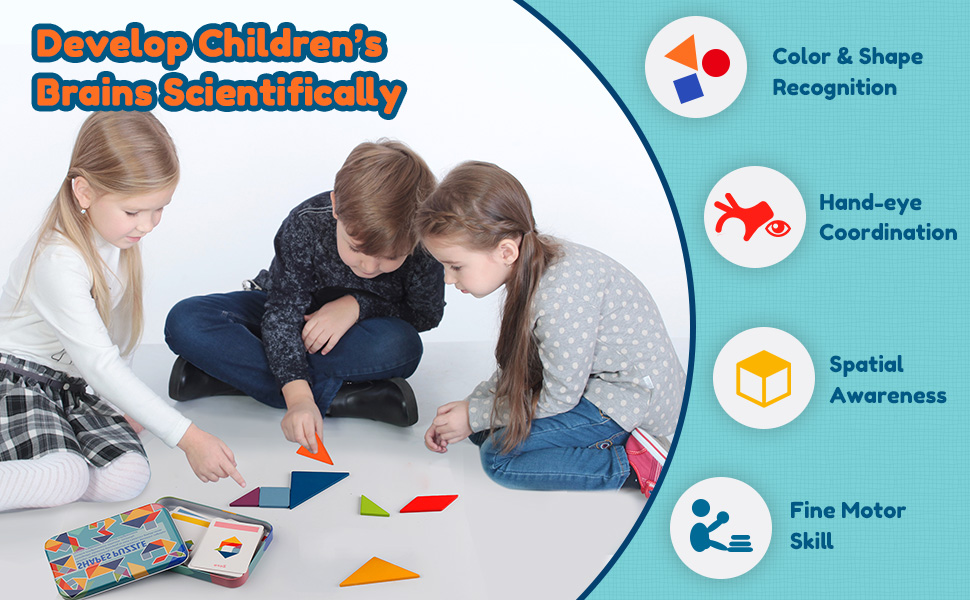
In our website www.kibtoy.com, about 30 puzzle games or toys have been put on the shelf for parents to choose. Generally speaking, all these puzzles are able to help facilitate children’s mental and physical development. However, parents should keep some kind of criteria in mind when choosing puzzles for their children. At least these three selection criteria should be kept in mind while choosing puzzles, including age-appropriateness, durability and storage.
This criteria requires parents to choose puzzles according to the ages of their children. if a puzzle is too advanced for children, they will be easily frustrated and discouraged because of its high difficulty. Children won’t be able to understand this puzzle or even feel a sense of achievement. As a result, they can’t have fun in this puzzle. On the other hand, when a puzzle is too easy for children, they will feel bored and disinterested in it due to their past experience. They will abandon it soon. Therefore, parents should choose puzzles that suit their children’s age and experience levels. To be specific, children’s ages could be divided into the following 4 groups, including infants, toddlers, big kids and tweens and teenagers.
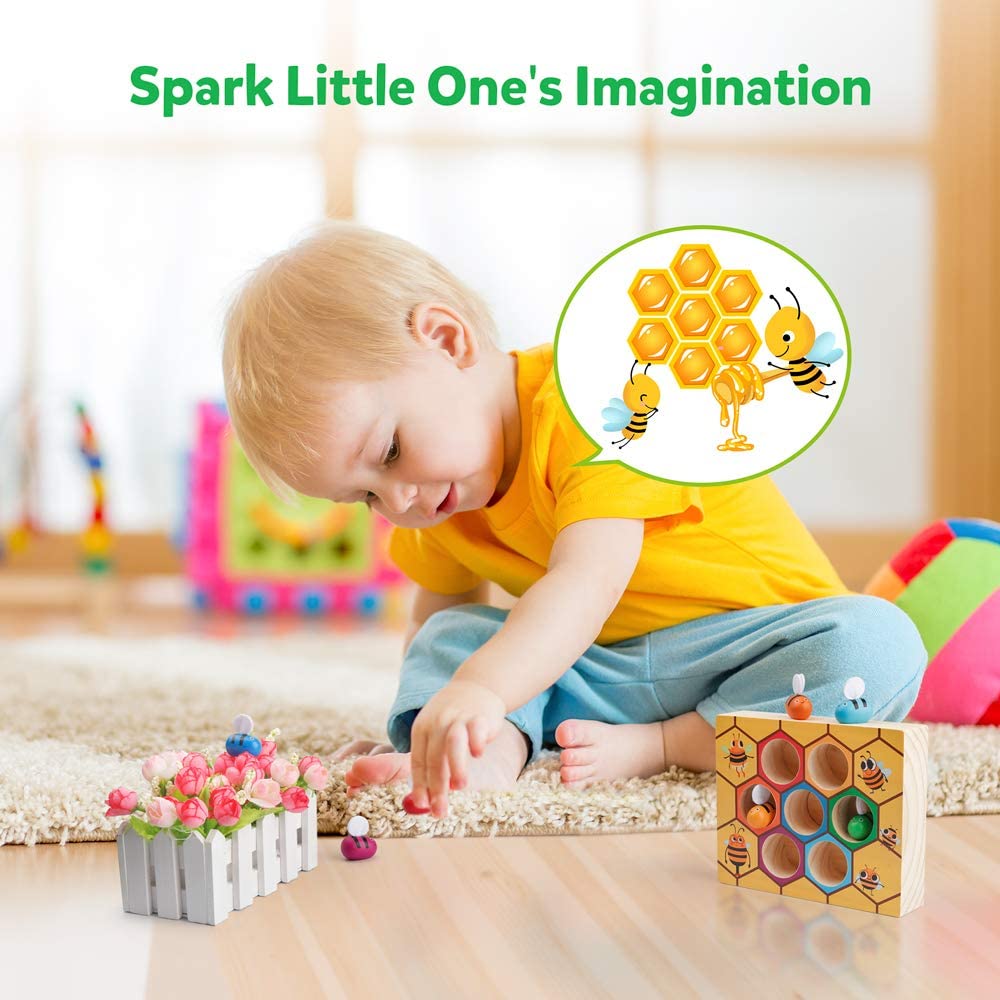
Montessori Wooden Clamp Bee to Hive Game
Babies (from 1 to 2 years old): Since some puzzle pieces are small enough to become choking hazards for small babies, parents should deliberately choose those puzzles with big blocks made of high quality materials. Babies at this age tend to use their senses to explore the world around them, such as grabbing, tasting, listening, and even chewing. It has to be safe for babies to contact puzzles in these ways. Meanwhile, parents could choose puzzles which could help develop children’s sensory abilities, such as colour recognition and fine motor skills. In order to guarantee children’s safety, parents should look at children while they’re playing puzzles.
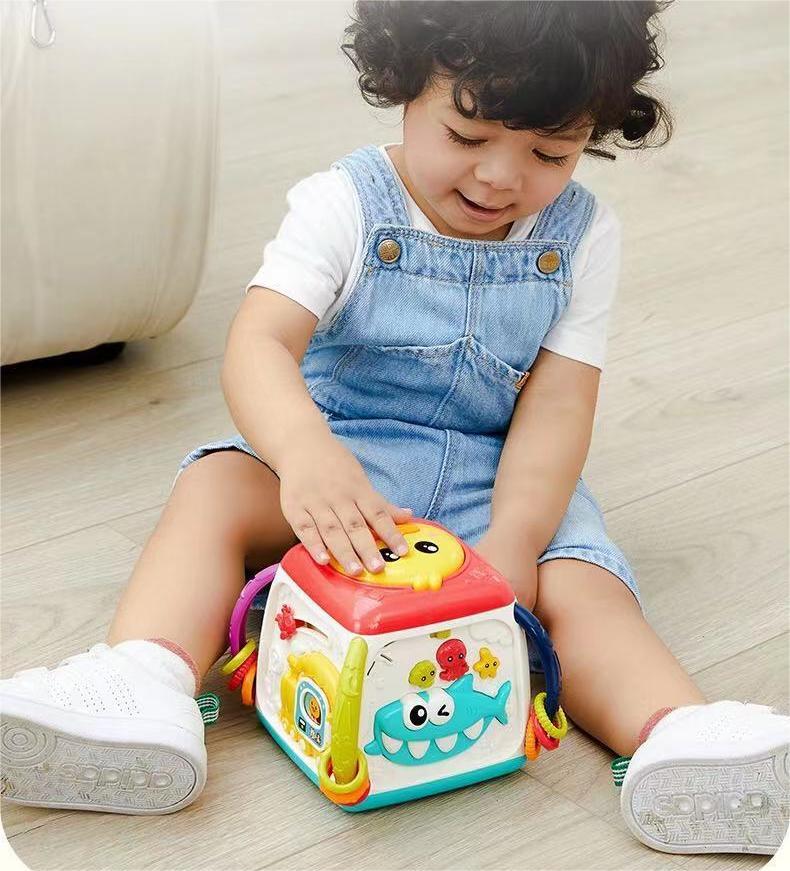
Toddlers (from 2 to 3 years old): Parents could choose those puzzles with large knob pieces for children at this age. They might still tend to use their sensory organs to play puzzles but they will be more willing to solve puzzles with their constant attempts. Parents should encourage children’s problem-solving and critical skills by reducing interference. In other words, parents could stay around quietly but not tell children how to solve a puzzle. Puzzle playing could facilitate the development of children’s fine motor skills and logical thinking.

Big kids (from 3 to 7 or 8 years old): children at this age are able to solve complicated puzzles up to several hundred-piece puzzle. They could use harness their skills, knowledge and experience to analyse those complicated puzzles independently. They might enjoy having a puzzle game with adults because they are confident to win. Playing puzzles could become a interactive process where children enjoy communication and competition.
Tweens and teens (7 years old and up): Children at this age are old enough to play puzzles just like adults. They can figure out solutions like adults. So, parents could select puzzles according to their needs and interests. For instance, a gravity maze could help them learn a physical lesson about gravity at school. Puzzles couldn’t only help you consolidate their observing and reasoning skills and fine motor skills but also their strategic thinking skills.
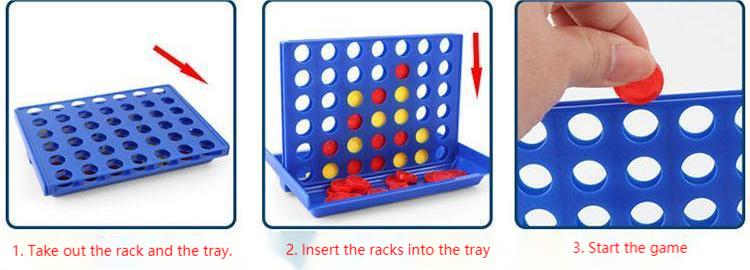
As for young children who like to lick or even chew their toys, durable and non-toxic puzzles are essential for them. Puzzles should be sturdy, not easy to rip or warp for handling. Otherwise, puzzles could become dangerous for young kids and uninterested for older kids.
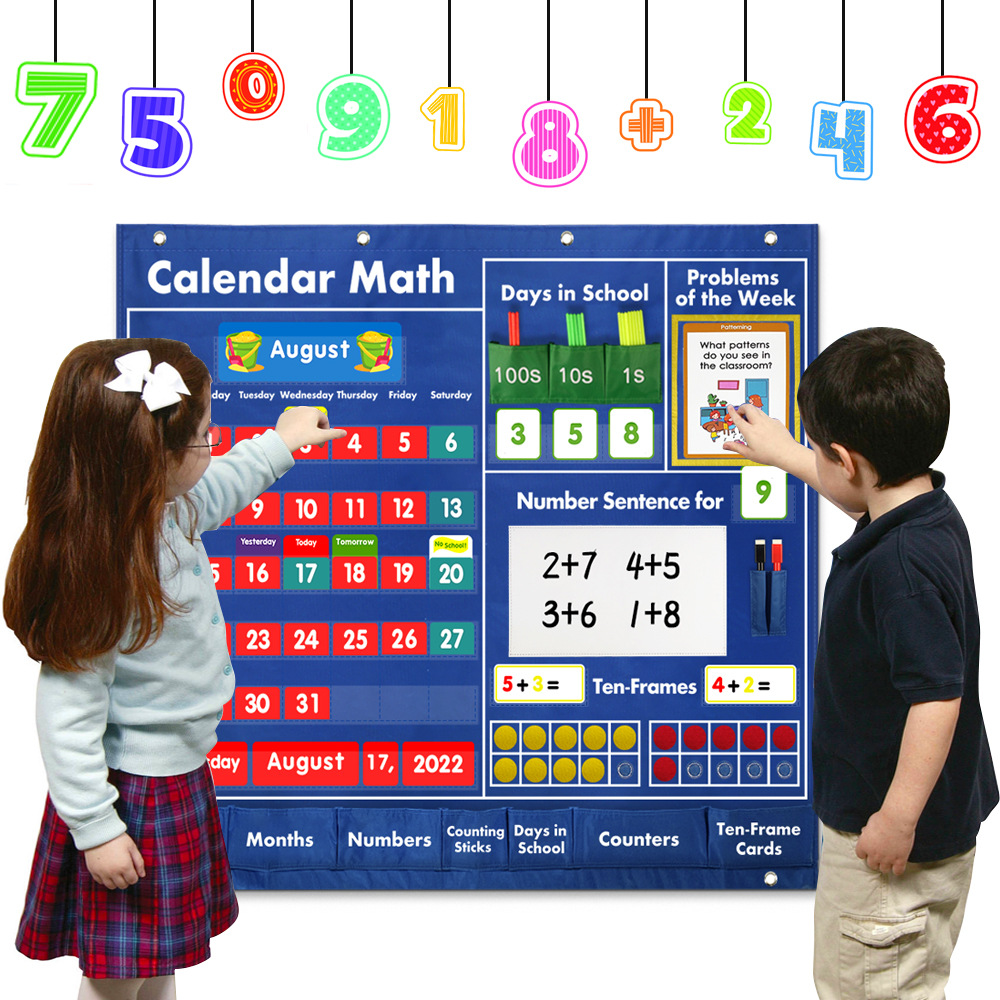
3. Storage
Nothing could be worse than a puzzle with one missing piece. So, parent should choose a puzzle that comes with a sturdy storage box. When children finish their puzzle game time, they could put all tiny pieces back.
